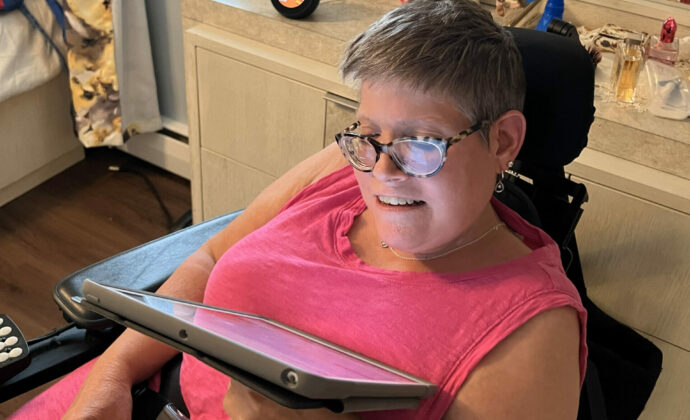
Smart Homes Empowering People with Disabilities
Smart home technology is revolutionizing the way people with disabilities can live more independent, comfortable, and secure lives. For the past four years, Community Interactions (CI) has embraced this innovative shift, integrating smart home devices into the homes of the individuals it supports to enhance autonomy, safety, and convenience.
With the encouragement of the Pennsylvania Office of Developmental Programs (ODP), funding through waiver services, grants, and dedicated efforts, CI is creating homes that cater to the specific needs of the men and women it supports, helping them lead fuller lives. To date, CI has integrated smart home tech in ten of its residences.
“The primary goal of our smart home technology initiative, which is part of our strategic plan, is to foster independence,” said Christopher Lynn, CI’s Director of Operations, who several years ago was invited to join ODP’s Technology Taskforce, and a subgroup that produces the quarterly newsletter “Technology Today,” an online publication that promotes the many different uses of technology, from low-tech tools to high-tech devices.
For individuals with physical disabilities or limited mobility, tasks that might typically require assistance, such as adjusting the thermostat, turning lights or entertainment systems on and off, are now made possible through voice commands and smartphone or tablet apps. Devices like Amazon Alexa and Google Home are installed in various rooms of these CI smart homes, and are able to connect to and control other smart devices in the home such as smart plugs, lights, thermostats, and other devices. This allows residents to control their environment without needing to physically interact with switches or dials. This level of independence is a game-changer for individuals, like longtime resident and part-time CI Receptionist Melanie Yoho, who uses a wheelchair.
“It’s very beneficial and makes me feel independent,” said Melanie, describing her smart home. “It makes life a lot easier.”
Melanie doesn’t have to depend on staff to change the room temperature, or set an alarm. Small yet meaningful changes have made her more self-sufficient, helping her start her day, for example, by asking about the weather and planning her outfit accordingly.
CI’s smart homes also come equipped with iPads for both residents and staff. Residents use these devices for communication with family, entertainment, and other daily tasks, while staff use them to record medication administration and document care, streamlining operations and ensuring that everyone is on the same page.
Beyond immediate in-home benefits, CI’s smart home initiative includes exploring the use of remote support systems, allowing staff to assist residents virtually. “The idea is to give individuals more independence while still ensuring safety,” Christopher said.
Remote support systems can help with everything from answering simple questions to dealing with more complex issues, like assessing whether someone at the door is a stranger or not.
Despite these advancements, Christopher is cautious about becoming overly reliant on technology. “We’re in a profession where our goal is to work ourselves out of a job. We want people to take risks and learn from their failures, just like anyone else,” he noted. This philosophy, known as the “dignity of risk,” a phrase that he loves, underscores the balance between fostering independence and ensuring safety. Ultimately, Christopher sees smart home technology as a means to empower people. “It’s all about giving people control over their lives, making sure they have the freedom to live independently and safely.”


